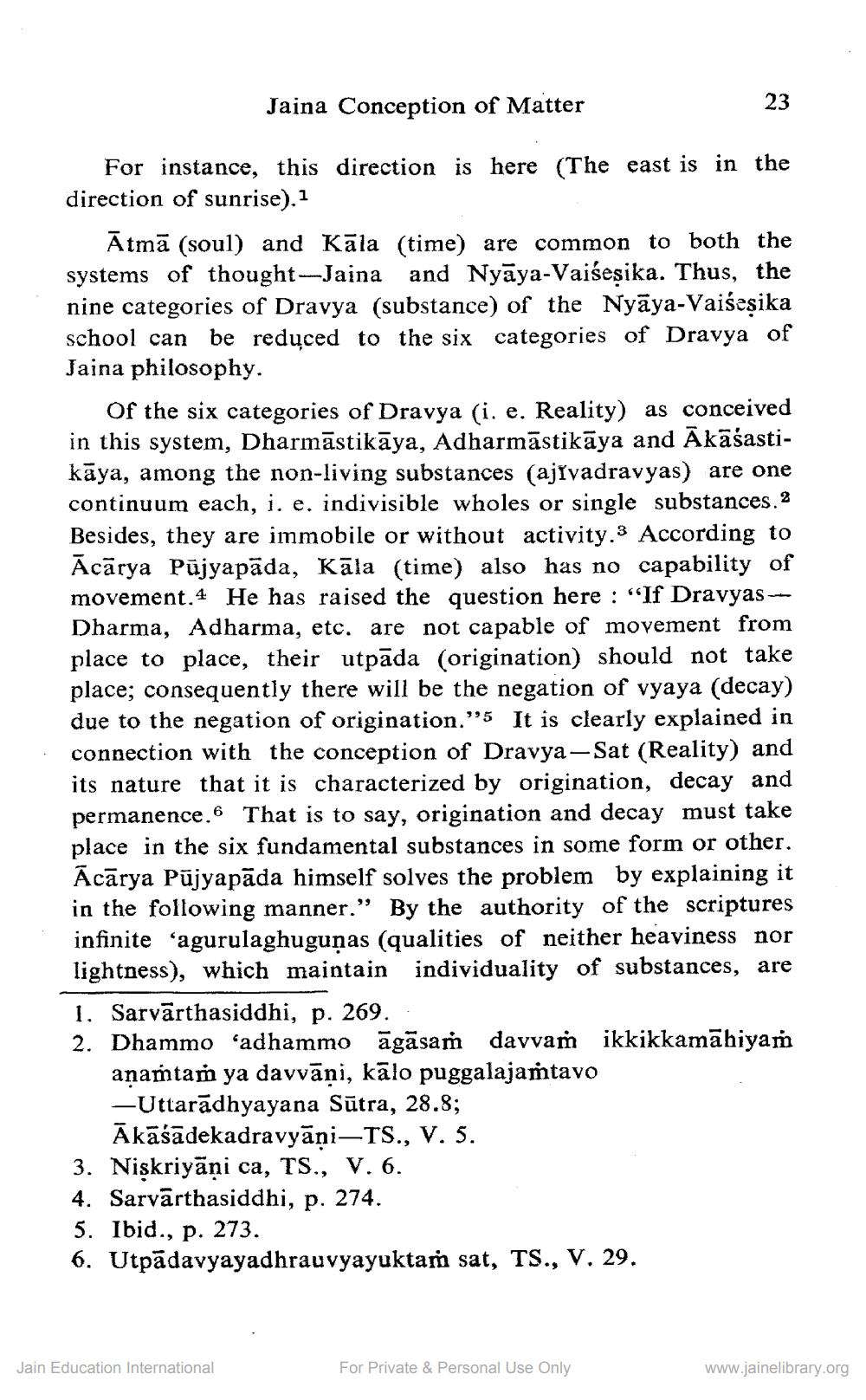________________
Jaina Conception of Matter
For instance, this direction is here (The east is in the direction of sunrise).1
Ātmā (soul) and Kāla (time) are common to both the systems of thought-Jaina and Nyāya-Vaišeşika. Thus, the nine categories of Dravya (substance) of the Nyāya-Vaišeşika school can be reduced to the six categories of Dravya of Jaina philosophy.
Of the six categories of Dravya (i. e. Reality) as conceived in this system, Dharmāstikāya, Adharmāstikāya and Ākāśastikāya, among the non-living substances (ajsvadravyas) are one continuum each, i. e. indivisible wholes or single substances. 2 Besides, they are immobile or without activity.3 According to Ācārya Pūjyapāda, Kāla (time) also has no capability of movement.4 He has raised the question here : "If Dravyas-- Dharma, Adharma, etc. are not capable of movement from place to place, their utpāda (origination) should not take place; consequently there will be the negation of vyaya (decay) due to the negation of origination."5 It is clearly explained in connection with the conception of Dravya-Sat (Reality) and its nature that it is characterized by origination, decay and permanence.6 That is to say, origination and decay must take place in the six fundamental substances in some form or other. Ācārya Pujyapāda himself solves the problem by explaining it in the following manner.” By the authority of the scriptures infinite 'agurulaghuguņas (qualities of neither heaviness nor lightness), which maintain individuality of substances, are 1. Sarvārthasiddhi, p. 269. 2. Dhammo 'adhammo āgāsaṁ dayvaṁ ikkikkamāhiyam
anamtam ya davvāni, kālo puggalajastavo
-Uttarādhyayana Sūtra, 28.8;
Ākāśādekadravyāni—TS., V. 5. 3. Niskriyāṇi ca, TS., V. 6. 4. Sarvārthasiddhi, p. 274. 5. Ibid., p. 273. 6. Utpādavyayadhrauvyayuktam sat, TS., V. 29.
Jain Education International
For Private & Personal Use Only
www.jainelibrary.org




